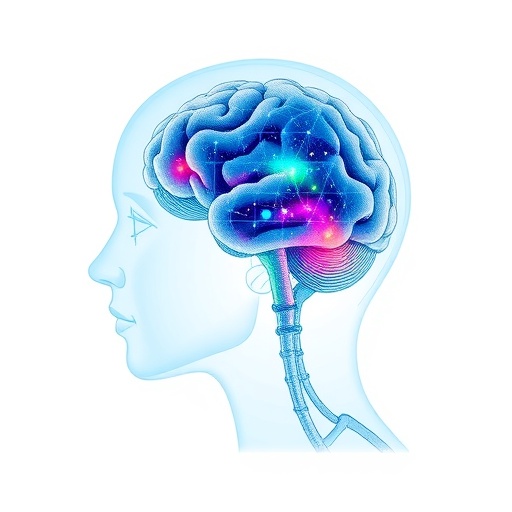In a significant leap forward for autism research and clinical practice, scientists have engineered a cutting-edge deep-learning model designed to assist clinicians in providing faster, more accurate autism spectrum disorder (ASD) diagnoses. This model, detailed in a recent publication in the esteemed journal eClinicalMedicine, leverages resting-state functional magnetic resonance imaging (rs-fMRI) data, a non-invasive technique that maps brain activity by measuring fluctuations in blood oxygenation, to identify individuals on the autism spectrum. Not only does this system achieve a remarkable 98% accuracy rate in distinguishing between ASD and neurotypical individuals, but it also incorporates explainability components that illuminate the brain regions most critical to its decision-making process.
The urgency to improve autism diagnosis stems from longstanding challenges in current clinical pathways, which primarily rely on labor-intensive, in-person behavioral assessments. Such evaluations can entail months or even years of waiting before a definitive diagnosis is made, contributing to delayed interventions during critical developmental periods. By developing an artificial intelligence (AI) solution that promises accuracy coupled with interpretability, researchers aim to alleviate this bottleneck, potentially transforming the landscape of autism assessment and care.
This AI model’s foundation rests upon the thorough analysis of the Autism Brain Imaging Data Exchange (ABIDE) cohort, encompassing 884 participants aged between 7 and 64 years across 17 distinct research sites. The dataset’s diversity and size allowed the team to train and validate the model rigorously, ensuring robustness and generalizability across populations. The model’s training involved exhaustive computational simulations and comparative investigations of several explainability techniques, ultimately identifying gradient-based methods as the most effective for generating transparent insights into neural underpinnings.
Explainability in AI applications, especially within health sciences, addresses a critical concern: understanding how and why an algorithm arrives at a particular conclusion. Unlike traditional “black-box” AI, where decisions can be inscrutable even to experts, the current model produces clear visual maps highlighting brain regions exerting the greatest influence on classification outcomes. This transparency empowers clinicians by providing an interpretable context, fostering trust, and facilitating informed decision-making alongside conventional assessments.
Developed as part of a final-year undergraduate project at the University of Plymouth, the research exemplifies interdisciplinary collaboration, uniting expertise from computer science, psychology, engineering, and medical fields. Supervised by Dr. Amir Aly, an expert in artificial intelligence and robotics, the project also benefited from the support of the Cornwall Intellectual Disability Equitable Research (CIDER) group at the Peninsula Medical School. Their combined efforts yielded a sophisticated analytical framework capable of identifying subtle neural signatures associated with autism, effectively pushing the boundaries of current diagnostic methodologies.
One of the most compelling aspects of this research is its potential to prioritize clinical assessments. By producing a probabilistic score indicating the likelihood of ASD based on brain imaging data, the model can stratify patients, highlighting those who would benefit from earlier intervention. This targeted approach could significantly reduce waiting times and health disparities, especially in regions where specialized diagnostic resources are scarce.
Moreover, the work addresses a pressing need for early detection. Extensive studies have shown that timely diagnosis of autism can substantially improve developmental trajectories, enabling access to tailored behavioral therapies, educational support, and community resources that enhance quality of life. Given the increase in ASD prevalence worldwide, tools facilitating early, reliable identification are becoming more crucial than ever.
The methodology involves the application of advanced computational simulations and machine learning algorithms on preprocessed rs-fMRI data. Resting-state fMRI captures intrinsic brain activity patterns without requiring participants to perform tasks, making it particularly suitable for diverse clinical populations, including individuals for whom traditional testing may be challenging. The research team meticulously compared various explainability approaches, confirming that gradient-based attribution maps provide consistent and meaningful information about the neuroanatomical contributors to the AI’s decisions.
This foundational study has already catalyzed further research spearheaded by PhD candidate Kush Gupta, who is integrating multimodal datasets and experimenting with varied machine learning architectures. The overarching goal is to refine and generalize AI-driven autism diagnostic tools that transcend geographical and demographic boundaries, empowering clinicians worldwide. These advances dovetail with Dr. Aly’s broader research initiatives, which explore the interplay of robotics and AI in supporting autistic individuals and harnessing health data for improved medical outcomes.
Professor Rohit Shankar MBE, the senior author and Director of CIDER, aptly framed the significance and future potential of this research. While acknowledging the impressive strides made in developing explainable AI models for autism diagnosis, he underscored the need for extensive validation and ongoing investigation before clinical implementation. His cautionary words resonate with the scientific ethos: while the future looks promising, continued efforts are essential to ensure these technologies are safe, ethical, and effective.
The study represents an exemplar of how AI’s integration into neuropsychiatry can trigger transformative change. Rather than supplanting human expertise, these innovative tools serve as crucial adjuncts that amplify clinicians’ capabilities, delivering insights that might otherwise remain elusive. As diagnostic services worldwide confront increasing demand, AI models such as this offer a beacon of hope for streamlined, equitable, and evidence-based autism diagnosis and management.
In conclusion, the convergence of advanced neuroimaging techniques and explainable AI holds immense promise for reshaping autism diagnosis. This research from the University of Plymouth marks a pivotal step towards deploying sophisticated, transparent computational models in clinical contexts, ultimately facilitating earlier intervention and tailored support for autistic individuals. With further validation and technological refinement, such AI-powered innovations could become indispensable tools in the global effort to understand and address autism spectrum disorders accurately and compassionately.
Subject of Research: People
Article Title: Identification of critical brain regions for autism diagnosis from fMRI data using explainable AI: an observational analysis of the ABIDE dataset
News Publication Date: 18-Sep-2025
Web References: 10.1016/j.eclinm.2025.103452
References: eClinicalMedicine Journal Publication, University of Plymouth Research Team
Keywords: Autism Spectrum Disorder, Deep Learning, Explainable AI, fMRI, Resting-State Imaging, Neuroimaging, Machine Learning, Autism Diagnosis, Computational Modeling, Medical AI, Brain Regions, Gradient-Based Explainability




